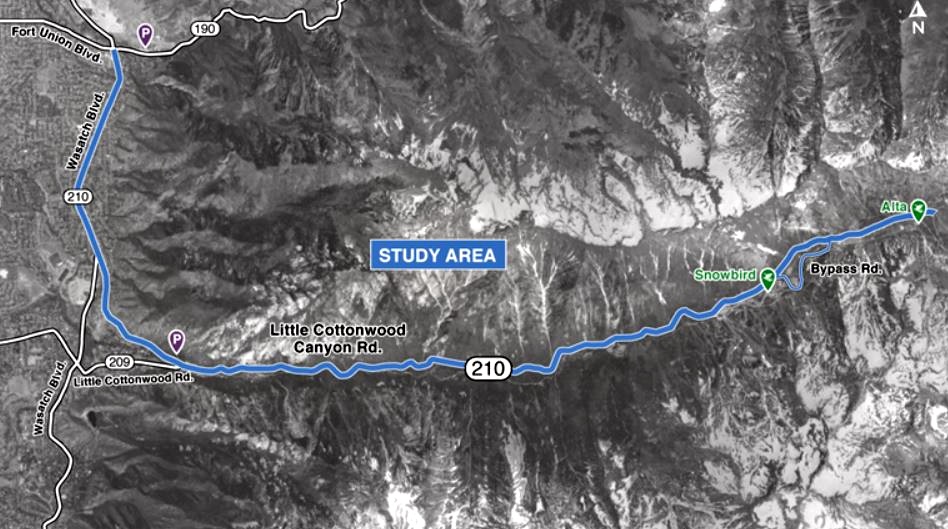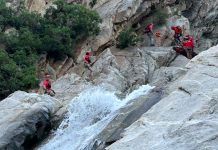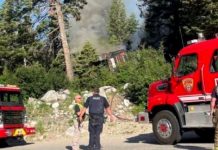SALT LAKE CITY, Utah, Aug. 31, 2022 (Gephardt Daily) — The Utah Department of Transportation on Wednesday announced it will pursue Gondola B as the option to ease traffic congestion in Little Cottonwood Canyon.
A UDOT statement says that option is “the single preferred alternative developed as part of the Little Cottonwood Canyon Final Environmental Impact Statement (EIS) to improve transportation in the canyon. Gondola B, with phased implementation, best meets the project purpose and need and provides the highest travel reliability for the public.”
UDOT rejected the option of building a four-lane highway, doubling the roadway. Utah State Rep. Suzanne Harrison (D-House District 32) released the following statement:
“Taxpayer-funded transportation solutions should benefit all residents, not just ski resorts. A gondola is the wrong approach for Little Cottonwood Canyon.
“While UDOT’s decision today does not mean the gondola project is inevitable, it is obviously the end goal. From the beginning I have called for a phased approach that more sustainably protects our canyons and respects our tax dollars, and I continue to believe that is the best path forward,” Harrison’s statement says.
“We must work for fiscally responsible solutions with buy-in from local residents, like expanded parking reservation systems, increased carpooling, and more responsive busing service. I appreciate that UDOT is recommending pursuing other options to address congestion before the gondola project is fully funded, but I remain concerned that a gondola could still be forced upon us over the clear preference of local residents.
“It is critical that county residents engage in the upcoming public-comment process and make their voices heard before it’s too late.”
(Editor’s note: An earlier version of this story stated that Salt Lake County Mayor Jenny Wilson, who strongly opposes the gondola plan, supported widening canyon roadways. Wilson does not support the road-widening option.)
Timeline, phased introduction
The building and implementation of a gondola system is not currently funded, and could take several years, the UDOT statement says.
“Recognizing that safety, mobility and reliability are issues on S.R. 210 today, and that it may take years to secure federal, state and/or private funding for full implementation of the Gondola B Alternative, UDOT is proposing a phased implementation plan starting with components of the Enhanced Bus Service.”
Phasing could include:
- Increased and improved bus service as described in the Enhanced Bus Service Alternative, with no canyon roadway widening
- Tolling or restrictions on single occupancy vehicles, and the construction of mobility hubs
UDOT would also proceed with widening and other improvements to Wasatch Boulevard, constructing snow sheds, and implementing trailhead and roadside parking improvements, as funding allows, the news release says.
“These improvements will improve air quality, protect the watershed, and increase the quality of life for residents and canyon users by reducing traffic congestion as private vehicles shift to transit,” it says. “These improvements will improve air quality, protect the watershed, and increase the quality of life for residents and canyon users by reducing traffic congestion as private vehicles shift to transit.”
The Final EIS, available for review on the project website, is the next phase in the EIS process, which includes a 45-day public review and comment period through October 17.
“Once the public comment period has ended, UDOT will consider all comments received on the Final EIS when deciding which alternative and sub-alternatives are selected in the Record of Decision (ROD),” the released statement says. “The ROD, as the next and final step in the EIS process, will identify the final alternative and is anticipated to be issued in the winter of 2022/2023. Implementation of the selected alternative may only occur after the ROD is issued and when federal, state and/or private funding is identified.”
Studies
“We know how important this study is to so many canyon users, as the amount of public participation and comments we’ve received far surpasses any previous environmental study in UDOT’s history,” said UDOT Project Manager Josh Van Jura in the released statement.
“With numerous studies over many years as the starting point for addressing the transportation challenges in Little Cottonwood Canyon, we relied on the EIS process of in-depth technical analysis and environmental assessment, along with agency and public input, to identify Gondola B as the preferred alternative in the Final EIS.”
For more details on the preferred alternatives identified in the Final EIS, visit the project website.
Gephardt Daily will have more information and reactions to this decision as the story develops.







